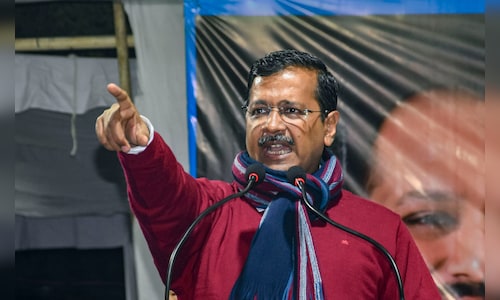Our Terms & Conditions | Our Privacy Policy
Delhi Election 2025: Whose offer will entice voters as freebies from all parties dominate the campaign
On February 5, voters in the National Capital Territory—often considered a microcosm of India—will cast their ballots to decide whether to grant the incumbent Aam Aadmi Party (AAP) another term in government, or opt for a change in leadership from one of its challengers, the Bharatiya Janata Party (BJP) or the Indian National Congress. While the outcome may seem straightforward, it’s also possible that, when the votes are counted on February 8, the result could defy such a linear prediction.
In the meantime, as intense campaigning is underway, these three national parties have decided to pull out all stops and have laid on the table a list of promises to whet the voters’ appetite. These vary for different parties except for one common denominator—cash doles. The other offers include subsidies on cooking gas, health insurance/care facilities, rebates for student travel, free medical treatment for senior citizens, etc relegating issues to address infrastructure development, and civic woes of the national capital.
On January 17, the BJP and its central leadership that scoffed at the idea of such grandiose announcements as ‘Revadis’ or inducements came out with its version of welfare measures. Characterised by its spokespersons as ‘empowerment’ the BJP could not resist the temptation of matching the AAP promise to raise its monthly cash pay-out for women to ₹2,100 (from present ₹ 1,000) and Congress’ ₹2,500. The BJP stated, that if voted to office, its government will pay ₹2,500 every month plus ₹21,000 monthly aid along with six nutritional kits for pregnant women.
Delhi, in a way, is no exception to this emerging trend in national politics with parties competing with each other to support women, who form nearly half of the electorate, with cash pay-out schemes. Governments in different states and run by different parties have made similar promises and are running these schemes. From two states in 2022-23, the number is set to enter double digits.
To name a few, these include the states of Assam, Maharashtra, Madhya Pradesh, Karnataka, Telangana, and West Bengal. In some of these and other states, there are additional schemes, such as free or discounted bus travel, the distribution of cycles to girl children, and subsidies on cooking gas cylinders.
In 2024-25, nine states have budgeted to cumulatively spend over ₹1 lakh crore on implementing largely unconditional cash transfer schemes for women beneficiaries, the latest report ‘State of the State Finances‘ published by PRS India noted.
The larger question that confounds planners is how the state balances its outgo to underwrite the expenditure on cash payouts in its budget, especially in states facing revenue deficits. Fiscal prudence is what confronts the policymakers in the light of grand promises which the government finds difficult to fulfill.
For instance, during the campaign in Delhi, the AAP is being challenged by the BJP and the Congress for failing to keep its word. They charge that even after three years, women of Punjab are waiting for the AAP promise that its government will give ₹1,000 per month.
On the other hand, the Mahayuti alliance government in Maharashtra just weeks before the polls implemented ₹1,500 per month for women. As per reports published this month, the government is struggling to find funds for the 2.3 crore beneficiaries estimated to cost the exchequer ₹35,000 crore annually.
In December, the Delhi government cleared a scheme to pay ₹1,000 per month to women. It is estimated that the beneficiaries would be around 3.8 lakh with an estimated outgo of ₹4,500 crore. With this scheme, the subsidy budget is around 21%. The plan was to be implemented only after elections and if AAP is voted back, the payout rises by ₹1,100 per month with a total outgo of ₹9,500 crore. These measures in turn should push Delhi, currently some ₹5,000 crore revenue surplus towards deficit.
“Implementing unconditional cash transfer schemes can help improve the consumption capacity of the beneficiaries. A study sponsored by the West Bengal government found that the beneficiaries of Lakshmir Bhandar in the state spent their allowances on household expenses, education, medical expenses, and investing in small business ventures, the PRS report said. It also cited two reports by ILO and FAO that concluded cash transfers can help in reducing the severity of poverty among women, and also enable them to improve nutritional status for themselves and their families.
For a welfare state, hand-holding to help the underserved is necessary. However, governments should encourage independent studies to analyse and quantify how these measures are ushering in a change in quality of life. That is one way to convince people that cash payouts serve a larger purpose.
There is an American adage: “There ain’t no such thing as a free lunch”, which means someone or the other is paying for it. In the case of welfare measures, these are supported by tax-payers who should have the right to know that the money is spent in an efficacious manner and benefitting those who need it the most.
—The author, K V Prasad, is an author and political analyst. The views expressed are personal.
Read his previous articles here
Images are for reference only.Images and contents gathered automatic from google or 3rd party sources.All rights on the images and contents are with their legal original owners.



Comments are closed.